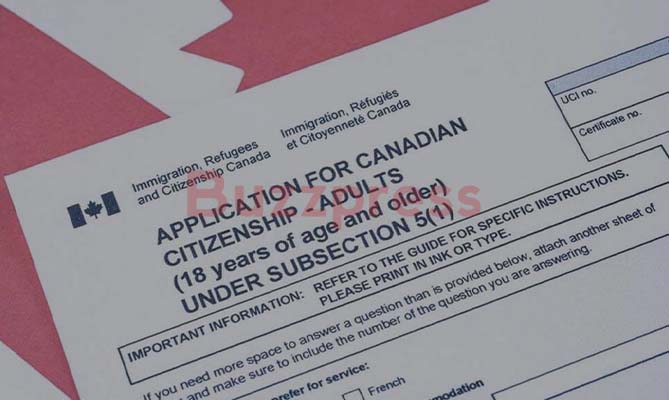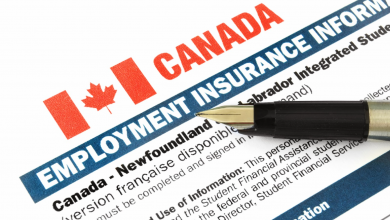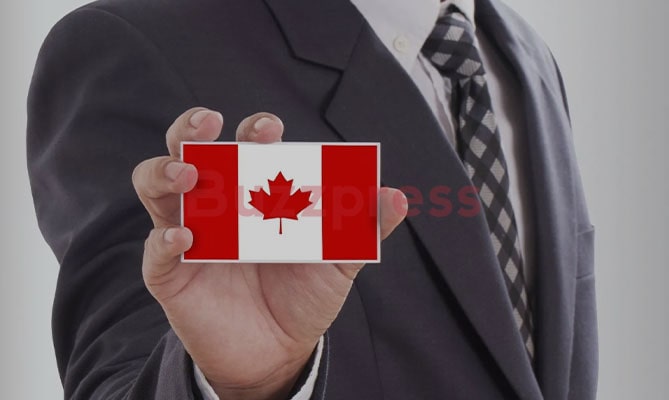How to become a permanent resident in Canada 2022

This article lists the steps to become a Permanent Resident in Canada through the Federal Skilled Worker Program and follows the Express Entry system of the application. This isn’t just an information guide. It is heavily focused on executing the steps (by following the links below) required to become a permanent resident in Canada.
For best results, it is recommended that you read this book for the first time from start to finish without clicking on any of the links, so you get a high-level idea of the process. In your second session, read it on your desktop/laptop/mac browser at read.amazon.com and go through the links. You will need to keep going back and forth between this book and the recommended web page, so you may find it easier to use a laptop and a secondary monitor.
Without further ado, let’s get started.
Before you create your immigration profile on the Canadian government’s website:
1) Write the IELTS General Training Exam. Required scores listed below:
- Principal Applicant scores for maximum Express Entry Points: Listening 8.5, Reading 8, Writing
7.5, Speaking 7.5. Anything above this will not increase your points.
- Principal Applicant minimum acceptable section scores: Listening 8, Reading 7, Writing 7,
Speaking 7. Anything below this will ensure you don’t get invited.
- Dependant scores for maximum Express Entry Points: Listening 8, Reading 7, Writing 7,
Speaking 7. Anything above this will not increase your points.
- Dependant minimum acceptable section scores: Listening 7, Reading 6.5, Writing 6.5, Speaking
6.5. Anything below this will ensure you don’t get invited.
Note: If you get great scores in 3 sections, but you have 0.5 less than the minimum acceptable score in the 4th section, you’ll be docked by about 45 points, and you definitely won’t get invited to apply for a PR. Make sure your individual section scores are above the minimums and aim to get the maximum points in all sections.
IELTS to Canadian Language Board equivalency charts
2) Get an Educational Credential Assessment (ECA) of all the degrees you completed outside Canada.
The processing times for each agency vary with demand, so I recommend going through the web pages of each agency to find out their processing times before making a decision.
3) If you’ve spent 180 or more days in the US over your lifetime (time as a minor also included), you’ll need to get an Identity History Summary report from the FBI. You don’t need this until after you get an Invitation to Apply for the PR, but the FBI used to take over 14 weeks to give it to you after you apply for it (it currently takes 3-5 business days), and you have only 90 days to submit your PR application after getting invited. Go to this link and provide your email address, then follow the instructions under “How to Submit a Request”. Call your local police station and have them take your fingerprints on this fingerprint form using card stock paper (you’ll have to take the printed card stock paper to the police station yourself). Send these two forms along with a copy of your confirmation e-mail to the FBI office address listed in the “submit your fingerprints” section.
4) Calculate your CRS Score. The lowest score to have received an invite so far is 413 (May 31, 2017).
You stand a good chance of getting invited within a year if your score is 465+.
Note: If you want to increase your score, you can:
- Get the highest IELTS scores mentioned above for each section,
- Get a master’s (40 points more than bachelor’s) or Ph.D. (15 more than a master’s, 55 more than bachelor’s). People with bachelor’s degrees can’t get over 441 (single, under 30, 3+ years work exp) or 443 (married to someone with bachelor’s) points unless they have a provincial nomination or Labour Market Impact Assessment
- Get a Canadian degree (about 100 points increase)
- Get 3+ years of work experience where at least 1 year is in the same field as one of your degrees.
- Learn French and get high scores in the TEF exam
Information for creating your profile:
Read the following:
1) How Express Entry Works: http://www.cic.gc.ca/english/express-entry/
2) If applying after Jan 1, 2016: http://bit.ly/2ku4eT2
4) Check your eligibility for Federal Skilled Worker Program (immigration program for people who’ve never studied or worked in Canada, and have at least a bachelor’s degree and at least 1
year related experience). You don’t need to have a job or job offer in Canada, but you need to have at least 67 points on summing up the six selection factors.
5) Check the minimum funds required to move to Canada based on the number of family members who will be coming with you. This amount is the minimum balance that needs to have been in your bank accounts for 6 months prior to submitting your PR application. You can’t borrow it, but a relative/friend can gift that amount to you and state on a notarized document that they will not ask for repayment.
Note: When you create your profile later, you’ll be asked how much money you’re planning to bring to Canada. Enter a realistic amount which is above the minimum, because this field gets locked the minute you accept an invitation to apply for a PR, and you’ll have to show proof to CIC that you can bring that much money to Canada.
6) Check your eligibility for immigration through Express Entry.
7) If eligible, you’ll get a personal reference code by email. Save that reference number. You’ll need it when you create your CIC account.
8) Create an account and register at Job Bank. Activate your profile and save your job seeker code.
9) Create a CIC account (Use GCkey option if you don’t have a Canadian bank account):
10) Once your account is created, log in and choose “Express Entry” under “What would you like to do today?”
11) Keep your IELTS Scorecard, ECA sheet, and Passports of yourself and your partner at hand. You won’t need a passport for your children to create the profile, but you will need it after you receive the invitation to apply, so start the process of getting passports for all your children immediately.
12) Keep your NOC number, job bank number, and Express Entry client number at hand.
13) Create your profile, and activate it. If you’ve entered all information correctly, the score on your profile will be the same as the score you calculated using the previously linked CRS calculator.
Note: Your profile is valid for one year from the day it was activated. If you don’t receive an invite within one year, you will have to create another profile in the same CIC account by filling in the same information.
- Your IELTS General Training score is valid for 2 years from the date listed on your scorecard.
- Your ECA is valid for 5 years from the date listed on your ECA sheet.
How the invitation process works:
- In the last quarter of each year, the immigration minister of Canada decides how many economic immigrants, family-based immigrants, and refugees they will be taking in the next year.
- a) 2017 Immigration Levels Plan
- b) Supplementary Information on 2017 Immigration Levels Plan
- c) Supplementary Information on 2018-2020 Immigration Levels Plan
- d) Supplementary Information on 2019-2022 Immigration Levels Plan
- Approximately once every two weeks, the Immigration Minister of Canada issues ministerial
instructions to CIC, advising them on the number of invitations (Invitations to Apply or ITA) they
can issue that day, and the corresponding lowest CRS score based on the number of invitations.
- The single source where you can get information on the latest and all past ITAs since the introduction of express entry: Express Entry Rounds of Invitations. Keep checking this page every Wednesday (though there are a few surprise variations) to stay updated.
- CIC tries to ensure that all applications are either approved or rejected within 6 months of receipt of all documents. Some people are approved within 1.5-2 months while others are approved exactly 180 days after submission of PR application.
- CIC can only complete processing within 6 months if the number of applications is manageable.
- The immigration ministry, however, has to meet the immigration targets which were set in the
previous year (unless there’s a significant change in the economy, in which case they can decide not to meet targets). If very few invitations were issued at the beginning of the year, you will most likely see a steep increase at the end of the year, or vice-versa.
- Pretty soon, you’ll be able to see an approximate relationship emerge between the number of invites issued and corresponding scores. For instance, if your CRS score is 482, you could get invited at 1500 ITAs, while someone with 460 would only get invited at 2500+ ITAs.
- It’s always a good idea to compare the number of invites issued so far in the current year with
the yearly targets for the current year to get a sense of your chances.
- If your CRS score is equal to or greater than the minimum CRS score listed in the current week’s ministerial instructions, you will receive an ITA.
- You can choose to either accept or decline your invitation. If you’ve falsified information such as your IELTS score, age, or years of work experience to get a higher CRS score, they WILL find out and reject you. In that case, it’s better to decline the ITA and modify your profile such that it reflects your real CRS score. You can get keep your profile active and get invited later, if and when the CRS cut-off drops.
- Once you accept the ITA, your profile is removed from the Express Entry pool as you’ve achieved your goal of getting invited. Now it’s your privilege to focus on completing your PR application.
- You have 90 days from the date the ITA was issued to complete your PR application. If you don’t submit it on or prior to the deadline, your ITA becomes invalid and you’ll have to get back into the Express Entry pool and wait for another ITA.
Note: After you accept the invitation, the “Decline Invitation” button will always be right next to the “Continue Application” button until you submit your PR application. DO NOT hit that button ever, even by accident, if you’re planning on going forward with applying.
PR profile creation after accepting ITA:
You will have to fill out the equivalent of full profile again for the applicant, dependent, and all children.
Many of the sections in the profile will be repeats/verification of your Express Entry Profile with which you got invited. Some fields in the new profile such as DOB, education, past employers, amount of money you’re bringing to Canada etc. will be locked and can’t be changed.
Some additional items you’ll need to fill out include:
- Your address history in the past 10 years or since the age of 18 (whichever was later). No gaps allowed.
- Your personal history (studying, working, unemployed) in the past 10 years or since the age of
18 (whichever was later). No gaps allowed.
- Your international travel history for the past 10 years or since the age of 18 (whichever was later). You’ll need these details from all current and old passports. You won’t have to list travel to and within your country of origin and country of current residence. However, if you traveled in the past as a tourist to the country of your current residence, that will have to be listed.
PR Application Process once you complete the PR profile:
The entire application process is online. You will not have to send anything by mail to Canada until you receive a passport request from CIC. See below for documents required:
Rules and guidelines for each document: The blue screenshots in the following sections are CIC’s instructions given alongside the document upload area for each document.
1) Marriage Certificate This is not required if you’re single and never married. If you’re married though, it’s required even if your spouse isn’t coming to Canada. If you’re divorced, you’ll have to attach the divorce certificate along with the marriage certificate.
2) Passport copy: You need this for the Applicant, dependent, all children including those who aren’t accompanying you.
3) Medical Exam: You’ll need to book an appointment with a panel physician to get this test done. This is valid for 1 year, and once it becomes invalid, you’ll have to get another medical exam before entering Canada EVEN IF YOUR PR HAS BEEN APPROVED. Get this done only after you receive and accept an ITA.
During your Upfront Medical Exam, the doctor will:
- Test your urine for blood, sugar, protein.
- Test blood for Syphilis, Hepatitis, HIV
- Take a chest X-Ray for TB and lung diseases
- Check Blood Pressure, vision
- Height and weight check
- Ask you questions about your past and current physical and mental health history, and any medications you’re taking/have taken. Do not lie here, because you most likely won’t get rejected unless you’re currently undergoing cancer treatment, have had a heart attack, liver/kidney function problems (fatty liver or kidney stones should be ok), or severe mental health issues (anxiety,
depression, medication, therapy, etc. are fine. Psychosis is not.). If you lie, they WILL find out later and you’ll get rejected later during PR renewal or while applying for citizenship.
4) Education: Applicant and dependent will need to upload copies of degree certificates, mark sheets/transcripts, ECA, IELTS Scorecard:
5) Employment History: For each employer, you’ve worked for in the last 10 years or since the age of 18, you’ll need to upload an employment verification letter with ALL the information shown in the sample letter below, and payslips/IT Returns for that employment period.
Note: You should know which NOC you’re applying for. CIC asks for this verification letter to see if you satisfy their requirements for that NOC. For example, if you worked in NOC 2132 Mechanical
Engineering, your job title could be an engineering role or non-engineering role like technical sales.
However, the responsibilities should be such that you require a Mechanical Engineering degree in order to do your job. If not, CIC will determine that this job was not in that NOC and may reject your application.
If you’ve got a Mechanical Engineering degree and experience in different fields like engineering,
marketing, finance, etc., then you’ll still be eligible for the Federal skilled worker program if you have at least one year of full-time, paid employment in the same NOC as your degree. If you have a
Mechanical Engineering degree and no experience or less than one year experience in Mechanical
Engineering, you are not eligible for the federal skilled worker program. In this case, it’s better to apply with your spouse as the primary applicant and yourself as the dependent.
Also note that if you have degrees in multiple fields like engineering, business, etc. you can be eligible for the federal skilled worker program through both NOCs provided you have at least 1 year full-time, paid employment in both fields. If not, choose the NOC where you have the experience. For example, if you have a mechanical engineering degree and 2 years’ experience in mechanical engineering following
which you did an MBA, and you’re applying before completing your first year of business-related professional work, you should apply in the Mechanical Engineering NOC as you’re not eligible for the business NOC until your first work anniversary after completing your MBA.
In addition to all of the above, you should maintain at least 67 points in the FSW six selection factors right from the date of creating the profile, until the day your PR application is approved.
Sample Employment Verification Letter
COMPANY LETTERHEAD
Date of writing a letter
TO WHOM IT MAY CONCERN
This letter shall serve to confirm that FirstName LastName has been employed by CompanyName in the
the capacity of JobTitle from StartDate to Present (or EndDate if past employer).
His/her SALARY in this position is/was (enter salary in local currency and specify if per hour, week,
month, year, etc.)
His/her benefits in this position include such-and-such (if no benefits were given, specify that. Else list
out health insurance, dental, vision, etc.)
He/she works for X hours per week in this position (Canada defines full-time employment as 30
hours/week currently, so if you work less than 30 hours/week, your experience will not count for express entry unless you’re working multiple jobs during the same time period for which you’re getting multiple employment verification letters).
His/her key responsibilities in this position are/were as follows:
- Responsibility 1
- Responsibility 2
- Task 1
- Task 2
I trust that this information meets the requirements for employment records. If any further information is required, please do not hesitate to contact the undersigned.
Yours sincerely,
SIGNATURE
Full Name of person signing the letter (this can be HR or your manager)
Job Title of person signing the letter
e-mail address of the person signing the letter
Phone number of the person signing the letter
Company address and contact information (reception number or central e-mail address).
6) Police Certificates from all countries where you’ve spent over 6 months (including time as a
minor): You don’t need this for time spent in Canada as they’ll do their own criminal check on you. For all other countries, see here to find out how to get it.
7) Proof of possession of liquid funds, and lack of excess debt: Check current minimums required here. You’ll have to get letters from all banks where you hold accounts, stating your average balance over the past 6 months. In addition, you’ll have to get letters from any financial institutions where you’ve availed loans in any form (student loan, auto loan, the mortgage on a
house, credit card or other), stating the balance you still owe. If you’ve got debt, ensure that your average liquid funds in the past 6 months are more than the minimum, to prove that you can continue making payments and support yourself while unemployed in Canada and looking for a job.
8) Photo requirements: This, too, will only be uploaded online. No need to mail.
9) Letter of Explanation: If you’re not able to provide any of the above documents, or if there are some other exceptions in your application, consider writing a letter of explanation stating why that is the case, and show proof for how it does not have any negative effect on your application.
10) Fee required in Canadian Dollars: This can change in the future. Use this link to stay updated.
Payable by Credit/Debit Card. Note that the Right of permanent residence fee does not apply to dependent children.
After you submit your application (applies individually to an applicant, dependent, and children):
1) Within a few minutes of submission, you will receive a message in your CIC account which can be accessed by clicking on your PR application link. This is CIC’s Acknowledgement of Receipt
(AOR) of your application.
2) In a few weeks, your application will update to show whether you’ve passed or failed your medical exam. If you’ve failed, it means your PR application is going to get rejected.
3) If you move, change jobs, give birth to a child, change your marital status (the last one can really complicate your PR application and cause delays in the process), or make any other life change after submitting the PR application, use the IRCC Web Form to notify the government of Canada about these changes.
4) In 2-6 months, if your PR application has been approved, you will receive an email (in your email
account, not your CIC account) asking you to send your passport, 2 photos, and an application form (this form varies by the country of your residence, and some countries don’t require it) to
CIC. These documents should reach them within 30 days of the email being sent to you.
5) Your passport will come back with an Immigrant Visa stamp and you’ll get a sheet of paper labeled “Confirmation of Permanent Residence”. This gives you the right to enter Canada as a
Permanent Resident. Your COPR is valid for 1 year from the date it was stamped on your passport. If you do not enter Canada within 1 year, you would have effectively given up your right to permanent residence, and you’ll have to re-apply through Express Entry.
6) When you enter Canada, both your COPR as well as Medical Exam results should be valid. If your medical exam has expired, you will have to retake it before being allowed inside Canada.
After you enter Canada (applies individually to an applicant, dependent, and children):
1) You become a Permanent Resident as soon as you land within Canada. You will have to give a
Canadian address (either yours or a friend/relative) where they can send your PR Card. They will not send the PR card to addresses outside Canada. This PR card will be valid for 5 years.
2) There’s a high rate of rejection of PR card photos taken outside Canada (rejection will be sent through email), and especially those taken in the US.
- If you’re planning on moving permanently when you land, this won’t be a problem. Just go to a large pharmacy/photo studio and ask them for “PR card photos” (carry a printed copy of this to be safe) and send them to the address listed on the email.
- If you’re planning on landing first and moving later, make sure you get these photos taken in Canada before you leave just in case you get a photo rejection letter. Otherwise, you’ll face an endless cycle of rejections and delay your move date (as you can’t fly into
Canada without a PR card in hand). Your only other option is to fly into the US and drive across a land border with your COPR and passport.
3) If you obtain an address after landing in Canada and you would like to have your PR card delivered there, you can use the IRCC Web Form to notify the government of Canada about your new address.
4) If you wish to maintain your permanent residence, you are obliged to live (be physically present, not just have an address) in Canada for at least 2 years (continuously or discontinuously) in the
The 5-year period starting on the date you initially landed in Canada. If you fail to comply, your permanent residence will not be renewed if and when you apply for renewal at the end of 5 years.
5) Canada has a very liberal definition of physical presence. If you spend even a few minutes in
Canada (between 11:58 PM and midnight for instance) on a particular day, the government will acknowledge that you were physically present in Canada. This allows you to live in Canada and work in the US if you’re near the border.
6) If you wish to become a Canadian citizen, you will have to maintain PR status in Canada, and be physically present in Canada for 3 years (continuously or discontinuously). The time from application submission to receiving citizenship is approximately 8-12 months.
Settling in Canada
- Apply for an American Express credit card in your current country of residence the minute you
decide that you want to immigrate. Do this before you even start the immigration process, so you can give yourself time to build credit with American Express. They’re the only company that offers global credit transfer and will give you a very high credit limit in Canada as soon as you land (if you’ve been paying your bills). This will help you build credit much faster and make future purchases of a car/house much easier. If you skip this step, expect to receive ridiculously low amounts of credit ($1000-2000 per month) from banks, and wait to build credit before making large purchases.
- If you don’t have a job in Canada, it’s very hard to get apartments/condos on rent (especially in
Toronto and Vancouver). Most landlords in apartment buildings will ask you to pay a 1-year rent upfront or refuse even that sometimes. Your best bet is to find a basement listing on Kijiji.ca
and sign a short term lease of 3-6 months while you’re job hunting.
- Get a driver’s record from the road transport authority/bureau of motor vehicles in your city. If you’ve moved regularly, you’ll have to get it from all the cities/states you’ve lived in over the past 2 years. If you’re able to do this, you can get a full driver’s license (G-License) that will allow for lower insurance rates. If not, you may have to get a G-2 or G license and pay higher insurance rates for 1-2 years before you’re able to get a G-license.




